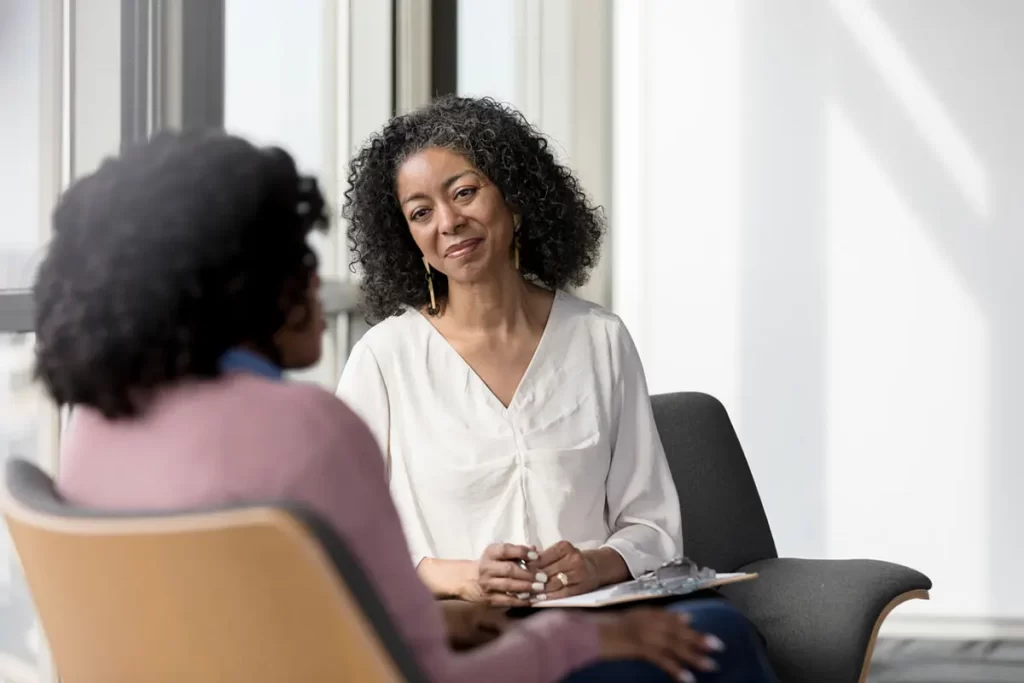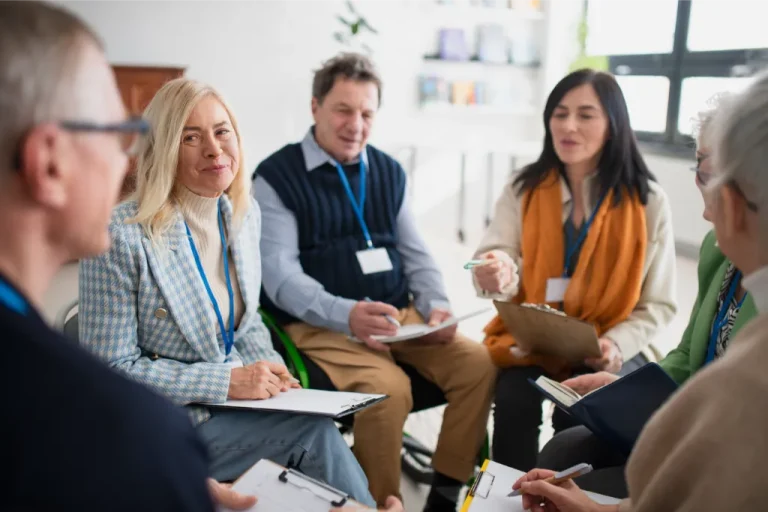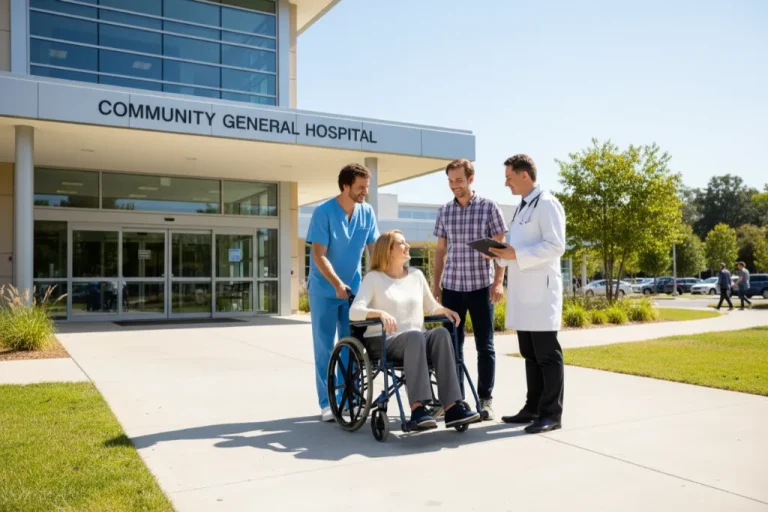What is Active listening?
Active listening is a communication technique that involves giving your complete attention to the person speaking, with the goal of understanding not just their words, but also the emotions and intentions behind them. Unlike passive listening, active listening involves more than just hearing; it requires paying attention, using nonverbal cues, and responding to show empathy and interest. It’s one of the most essential communication skills in care settings, especially when supporting people with complex health conditions or mental health challenges.
For healthcare professionals, practicing active listening means becoming an attentive listener who can communicate effectively and build mutual understanding. Care teams can gather accurate information through effective listening, form stronger therapeutic relationships, and contribute to better health outcomes.
Difference Between Hearing and Listening
Hearing is a passive process that happens automatically whenever sound reaches our ears. Listening, on the other hand, is active. It requires mental effort, intention, and focus. You may hear someone speak, but unless you’re fully engaged, you’re not truly listening. This distinction is critical in care settings, where people often need to feel heard and understood, especially when they feel overwhelmed or anxious about their health.
Active listening ensures the speaker’s feelings and concerns are acknowledged and validated. It means using appropriate body language, maintaining eye contact, and responding with nonverbal cues and follow-up questions. In doing so, healthcare providers show that they are not only hearing, but genuinely listening, which can make all the difference in supporting someone’s well-being.
The Role of Active Listening in Caregiving
In caregiving, active listening is critical in building trust and creating meaningful connections. When healthcare professionals take the time to listen actively, they make a safe space where the person feels acknowledged, respected, and supported. This is especially important when working with people facing mental health challenges, who may struggle to express themselves or fear that their concerns won’t be taken seriously. By offering emotional support through genuine listening, caregivers help people feel heard, easing anxiety and promoting emotional safety.
Active listening leads to more effective treatment plans, stronger relationships, and improved health outcomes. When caregivers use their active listening skills to notice verbal and nonverbal communication, like facial expressions, tone of voice, and body posture, they better understand a person’s needs. This presence allows healthcare providers and multidisciplinary teams to work more collaboratively, ensuring that care remains person-centred and responsive.

Key Techniques for Active Listening in Care
Developing strong active listening skills is essential for healthcare professionals aiming to provide person-centred support. Practical communication skills can make all the difference, whether someone is feeling overwhelmed, describing a health condition, or navigating multiple mental health challenges. The following techniques are designed to help caregivers become better active listeners, ensuring mutual understanding, building trust, and supporting better health outcomes through more responsive, informed care.
Maintaining Eye Contact
Maintaining eye contact is a powerful way to show you’re fully present and engaged in the conversation. It helps establish trust and demonstrates that you’re giving the person your complete attention. This small but meaningful gesture for healthcare providers communicates genuine interest, even before a single word is spoken. Just be mindful to keep it natural, too much can feel intense, while too little may seem like disinterest.
Using Non-Verbal Cues
Nonverbal communication is just as important as what is said out loud. Nodding, leaning slightly forward, and showing appropriate facial expressions all signal that you’re an attentive listener. These subtle non-verbal cues reassure the person that their words matter, helping them to feel more comfortable, especially when discussing sensitive mental health or healthcare concerns.
Providing Verbal Acknowledgment
Simple verbal responses like “I understand,” “That sounds challenging,” or repeating something in your own words effectively show you’re genuinely listening. These acknowledgments validate the speaker’s feelings and encourage them to continue. Active listening involves more than just hearing; it’s about responding in a way that deepens the connection and supports effective communication.
Avoiding Interruptions
One of the most respectful things you can do during a conversation is to let the person speaking finish their thoughts. Avoiding interruptions signals patience and allows for a more honest, uninterrupted expression of concerns. This is especially important in care, where people may need more time to articulate what they’re going through. By resisting the urge to jump in, you show that you’re genuinely there to listen actively and support them on their terms.
Demonstrating Empathy and Emotional Validation
One of the most impactful ways to strengthen active listening skills is by demonstrating empathy and offering emotional support. This means tuning into not only the words being said, but also the emotions behind them. For healthcare professionals, being able to recognise when a person may feel anxious, feel overwhelmed, or is struggling to explain their mental health concerns is essential. A caring response such as, “It’s completely okay to feel that way,” can go a long way toward helping the person feel heard and understood.
Active listening involves validating the speaker’s experience without judgment. Whether they’re discussing a health condition, family pressures, or personal fears, showing that their feelings are real and essential helps build trust. Effective listening in these moments is not about offering immediate solutions, but rather about being present and responsive to what the person is expressing. This empathetic interaction often leads to better health outcomes, as people are more likely to engage in care plans when they know they are respected and understood.
Managing Non-Verbal Communication
Nonverbal communication is a cornerstone of active listening. Your body can express interest, openness, or discomfort even without speaking. Sitting at eye level, using gentle facial expressions, and adopting an open posture signals that you’re safe to talk to. These cues can make a significant difference for someone dealing with mental health challenges, especially if they’re hesitant or unsure about opening up. An attentive listener, mindful of their body language, helps create a more supportive and trusting atmosphere.
On the other hand, crossed arms, checking a watch, or avoiding eye contact can unintentionally send a message of disinterest or impatience. For healthcare providers and organisations, training in recognising and managing nonverbal cues is vital to fostering effective communication. A combination of nonverbal communication awareness and verbal responsiveness ensures a more holistic and person-centred approach to care. In high-stress environments, such as during a hospital-to-home transition, practicing active listening through mindful body language can make a real difference in a person’s experience of care.
Importance of Active Listening in Community Transition Services
Active listening plays a critical role in Community Transition Services, where people are supported to move from clinical settings into more home-like environments. People may feel anxious, unsure, or even resistant to transition during this change. By practicing active listening, healthcare professionals can better understand personal concerns, preferences, and potential barriers, making the transition smoother and more person-centred.
When active listening ensures that each voice is acknowledged, people are more likely to communicate effectively, participate in their treatment plans, and feel safe in their new environment. Through good listening skills, nonverbal cues, and empathy, care teams can provide support that improves health outcomes, more excellent stability, and stronger therapeutic relationships.
Community Transition Services with Nurseline Healthcare
At Nurseline Healthcare, Community Transition Services are built around compassion, connection, and continuity. Every team member, from healthcare providers to support workers, is trained in techniques for active listening in care to ensure we’re not just hearing people, we’re genuinely understanding them. Whether it’s through maintaining eye contact, using appropriate facial expressions, or asking follow-up questions, we approach every conversation with care and intent.
Our multidisciplinary team focus on building mutual understanding with each person we support. By listening actively, we gather the accurate information needed to personalise support and respond to physical and mental health needs. This means we can offer the proper guidance, adapt care plans in real-time, and ensure people feel settled, respected, and safe throughout the transition process.
Active listening leads to deeper trust, more responsive care, and better long-term outcomes, and at Nurseline Healthcare, it’s at the heart of everything we do.






